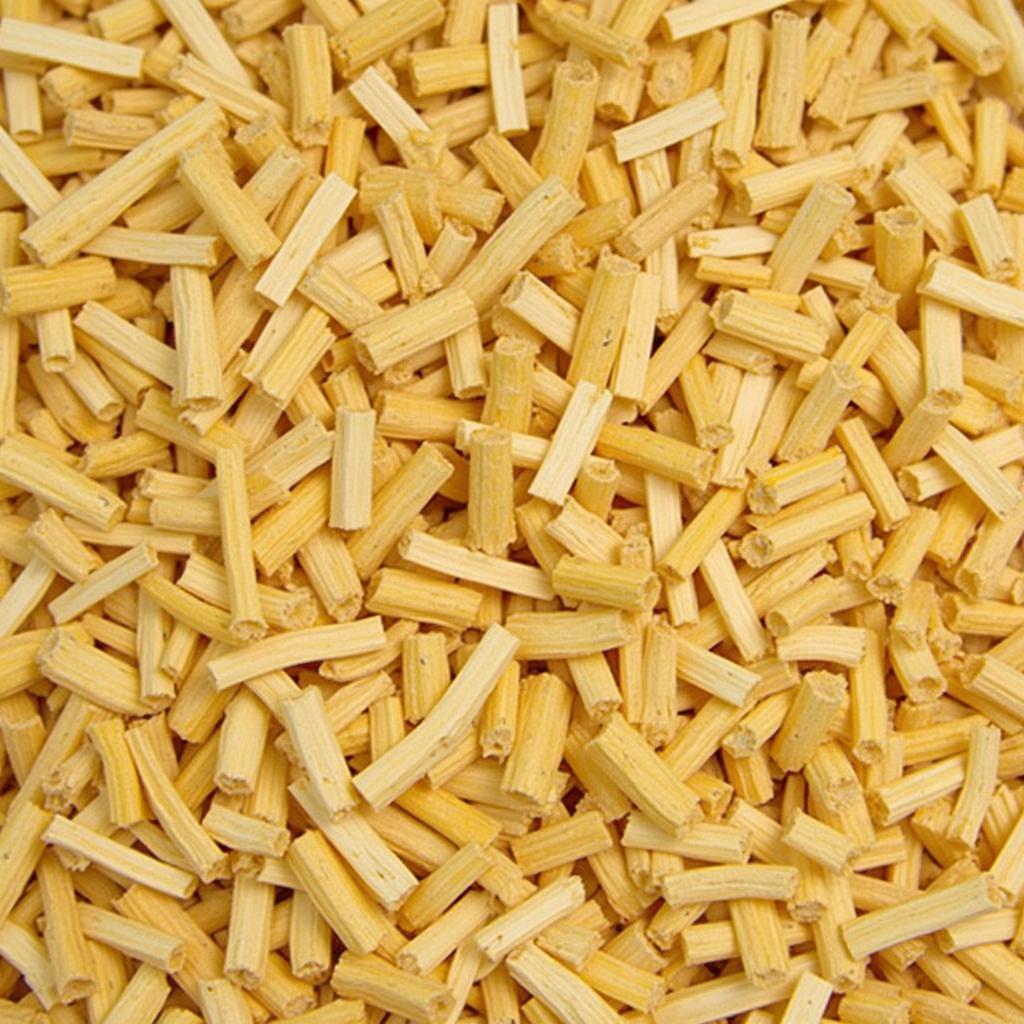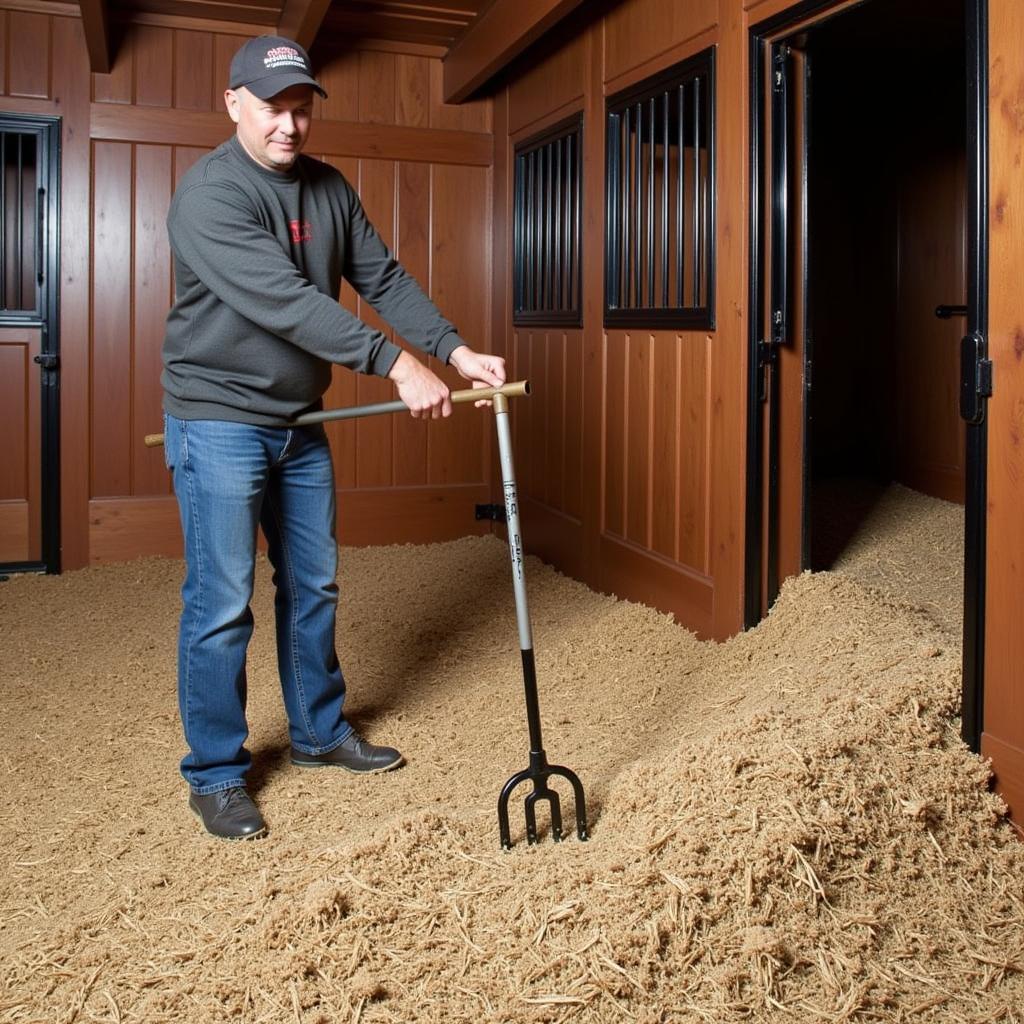Flax Horse Bedding is becoming an increasingly popular choice for horse owners looking for a natural, dust-free, and absorbent alternative to traditional bedding materials. But what exactly is flax bedding, and what makes it such a good option for your equine companion? This comprehensive guide will delve into the world of flax horse bedding, exploring its benefits, drawbacks, and everything you need to know to make an informed decision for your horse’s comfort and well-being.
What is Flax Horse Bedding?
Flax bedding is made from the stalks of the flax plant (Linum usitatissimum) after the seeds have been harvested for linseed oil production. These stalks, also known as flax shives, are processed into a soft, highly absorbent, and surprisingly durable bedding material.
 Flax plant shives
Flax plant shives
Benefits of Flax Horse Bedding
Flax bedding offers a wide range of advantages that contribute to a healthier, more comfortable stable environment for your horse:
- Superior Absorbency: Flax is known for its exceptional absorbency, capable of absorbing up to three times its weight in moisture. This means less frequent bedding changes, reduced ammonia odor, and a drier, healthier stall for your horse.
- Dust-Free Environment: Unlike straw or wood shavings, flax bedding generates minimal dust, making it an excellent choice for horses with respiratory sensitivities or allergies.
- Natural and Biodegradable: Flax is a completely natural and biodegradable material, making it an environmentally friendly option for horse bedding. It decomposes quickly and can be used as a valuable fertilizer for your garden.
- Thermal Regulation: Flax provides excellent insulation, keeping horses warm in winter and cool in summer. Its breathable nature helps regulate temperature and prevents overheating.
- Cost-Effective: While the initial cost of flax bedding might be slightly higher than other options, its superior absorbency and longevity often result in overall cost savings due to reduced bedding changes and disposal fees.
- Comfortable and Supportive: Flax bedding provides a soft and comfortable surface for horses to lie down on, with its cushioning properties offering excellent joint support, especially for older horses or those recovering from injuries.
Drawbacks of Flax Horse Bedding
While flax bedding offers numerous benefits, there are a few potential drawbacks to consider:
- Availability: Flax bedding might not be as readily available as traditional bedding materials in certain regions.
- Palatability: Some horses might find the slightly sweet taste of flax appealing and may be tempted to eat their bedding. While flax is not toxic, consuming large quantities can lead to digestive upset.
- Initial Investment: As mentioned earlier, the upfront cost of flax bedding can be higher than other options. However, its long-term cost-effectiveness often outweighs this initial investment.
How to Use Flax Horse Bedding
Using flax bedding is simple and straightforward:
- Prepare the Stall: Ensure the stall is clean and dry before adding the bedding.
- Spread the Bedding: Spread a 4-6 inch layer of flax bedding evenly across the stall floor.
- Remove Wet Spots: Regularly remove wet or soiled areas and replace them with fresh bedding.
- Add More Bedding: Depending on your horse’s needs and the stall environment, you may need to add more bedding every few days to maintain optimal absorbency and comfort.
 Cleaning flax horse bedding in a stable
Cleaning flax horse bedding in a stable
Expert Insights on Flax Bedding
“I’ve been recommending flax bedding to my clients for years, and the feedback has been overwhelmingly positive,” says Dr. Emily Carter, a renowned equine veterinarian with over 20 years of experience. “Its dust-free nature, superior absorbency, and overall health benefits make it a top choice for horses of all breeds and disciplines.”
Conclusion
Flax horse bedding is an excellent alternative to traditional bedding materials, offering a winning combination of comfort, health benefits, and environmental sustainability. By carefully considering the pros and cons outlined in this guide, you can make an informed decision about whether flax bedding is the right choice for your equine partner.
FAQs
Q: How often do I need to change flax bedding?
A: Due to its high absorbency, flax bedding typically requires less frequent changes compared to other materials. You might only need to change it every 1-2 weeks, depending on your horse’s individual needs and stall conditions.
Q: Is flax bedding safe for horses with respiratory problems?
A: Yes, flax bedding is an excellent choice for horses with respiratory sensitivities or allergies because it is virtually dust-free.
Q: Can I compost used flax bedding?
A: Absolutely! Flax bedding is biodegradable and composts quickly, making it an environmentally friendly choice.
Q: Where can I buy flax horse bedding?
A: Flax bedding can be purchased from various retailers, including feed stores, online retailers, and some farm supply stores.
For further assistance in choosing the best bedding solution for your horse, please don’t hesitate to contact us. We are available 24/7 to assist you. You can reach us at Phone Number: 0772127271, Email: [email protected] or visit our location at QGM2+WX2, Vị Trung, Vị Thuỷ, Hậu Giang, Vietnam. Our dedicated customer support team is here to help!